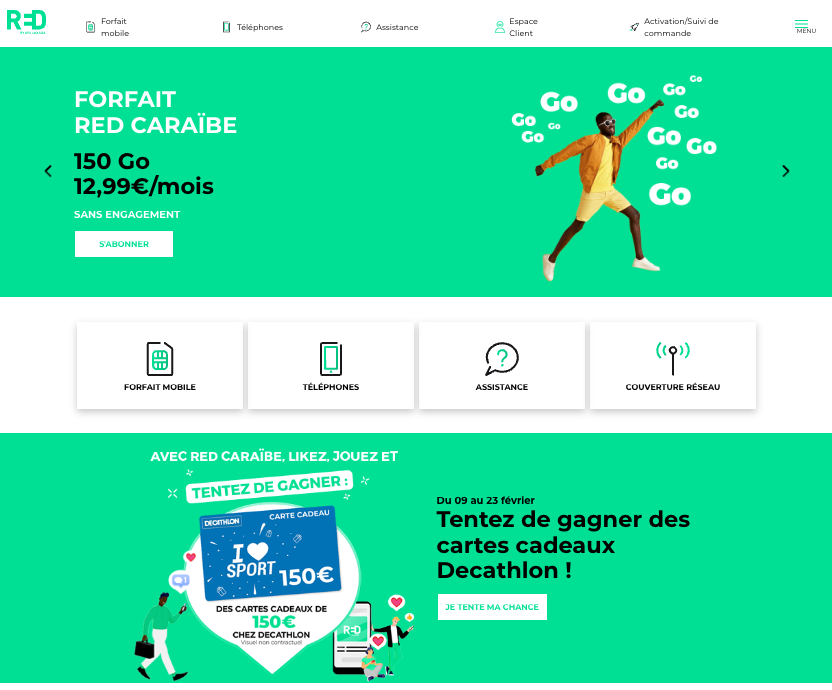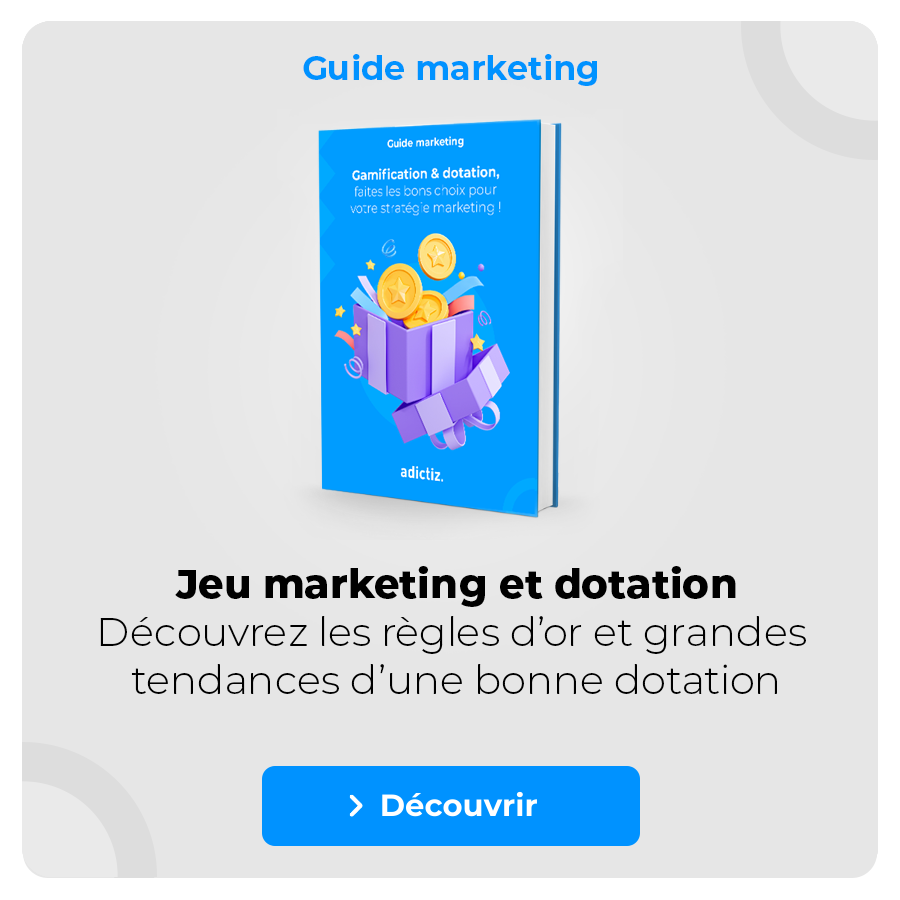Every marketing plan, whatever the sector, begins by defining its objectives. These can be many and varied: raising awareness of your offer, increasing sales, etc. To achieve theses objectives, it is customary to plan several marketing campaigns of various kinds throughout the year. here, we’re going to take a look at marketing gamification.
Interactive advertising campaigns stand the best of time, thanks to their many advantages: variety of mechanics, great capacity for personalization according to objectives, and ease of distribution. But to achieve ten times the performance of more standard campaigns, it’s important to be aware of a few essential best practices.
Here are 8 tips for a successful interactive campaign, from conception to delivery to audiences.
SUMMARY
- Take the time to choose the right game mechanics
- Optimise the entry form
- Adapt the look of the operation to your world
- Choose attractive prizes
- Spread your campaign using outbound marketing
- Highlight the campaign on your website
- Boost your performance through media coverage
- Capitalise on data activation to increase your ROI tenfold
1. Choose the right game mechanics
Marketing gamification brings together a number of techniques, which can be adapted to suit your needs. From simple forms to more elaborate scenarios, the possibilities are endless! Here are a few examples of concepts:
- Animation, qualification: to capture the attention and spend time with your audience while standing out from the crowd, you can offer a score-based competition. The aim is to achieve the best possible result to enter a prize draw. It is also possible to offer a quiz to raise awareness and qualify participants.
- Lead generation and conversion : to maximise conversions, it’s possible to offer an animation that lets audiences find out immediately if they’ve won a coupon. The game mechanics that work best are the wheel of chance, scratch cards and the one-armed bandit.
- Product preference, data collection (first-party, behavioral): there’s nothing like a shopping list (the participant chooses their favorite product form a gallery) to gather valuable information about potential customers. They are then redirected to the product page on the website.
Each mechanism must be adapted to the brand’s universe and image.
2. Optimize the entry form
The entry form is at the heart of the system. In today’s context (cookieless world), it makes it possible to collect first-party data while rewarding visitors for their participation.
To ensure qualified data collection, there are certain principles that need to be respected if you are to achieve your objectives, particularly in terms of volume. A visitor’s attention span depends on the balance between the information you are prepared to provide and the result (gain) you hope to achieve. The form must therefore be sufficiently complete, but care must be taken not to overload it.
A few practical tips:
- 1 field (email): better transformation, but no qualification
- 2 to 3 fields: the form is optimised, with a conversion rate of around 70% and a good level of qualification
- More than 5 fields: the form is poorly optimised and has a 50% chance of converting. Visitors will leave before taking part. To gather more information, it is advisable to add a 2nd qualification form a little further down the site.
3. Adapt the look of the operation to its universe
The packaging of the operation is also central to its success. Graphic designs must be adapted to the brand universeThe main elements highlighted on the first screen should be the prizes you can expect to win if you take part.
Different platforms offer different levels of customization, depending on the ressources and knowledge available. Some platforms offer time-saving graphic design and configuration services. Others also offer pre-configured templates taht you simply need to adapt.
4. Choose attractive endowments
Endowments to attract visitorsand encourage them to get involved. It is very important to choose these and to highlight them in the communications surrounding the operation.
High-tech prizes always work very well with target groups, but depending on the context, you may want to opt for gifts that are consistent with the brand’s universe (offering a product range for a launch, for example).
In the case of instant wins, it is preferable to offer smaller prizes that will boost conversion, such as discount vouchers, gift vouchers, free delivery, etc.
The interactive campaign is ready. But in reality, only part of the work is finished. Most of the effort has to be devoted to the dissemination part, to be able to hope for a high-performance ROI. This has an impact on costs, which are higher for distribution than for configuration. We take a look at the best practices for each of the following areas mode of distribution.
A quick reminder before we start: an interactive campaign can be cross-channel. Cela veut dire qu’elle peut techniquement être diffusée partout, soit via une url (partagée ou cliquable), soit intégrée à une page web par exemple.
5. Spreading your interactive campaign with outbound marketing
The operation can be announced in advance of its launch (teasing) to maximise traffic the day it starts. It’s very important to maintain regular communication throughout the campaign. At the end of the game, it’s important to keep in touch with the new leads collected, thanking them for their participation and congratulating the winners.
The outbound marketing of a campaign differs accorindg to the objectives pursued. To generate traffic to a website or in-store (drive to sotre), for example, we communicate via emailing sequences and/or posts on social networks. Vouchers can also be added, to be won and redeemed online or in-store. Resulst in terms of generating qualified leads is even more effective via social networks such as Facebook and Instagram.
6. Showcase your campaign on your website
The inbound marketing is all about offering visitors content that allows them to engage freely (by sharing their data or buying a product, for example).
In the field of gamification, the home page banner of a website is a format that works very well. It catches the eye and makes people want to take part. The visitor attention span on a site is lengthened, which is a key factor in capturing leads. It also helps to shed light on a particular offer or product.

7. Boost performance through media coverage
In order to achieve satisfactory results from a campaign, the choice of media coverage is inevitable. The first step is to give visibility, then the possibility to better control the volume of impressions, clicks and leads expected. As a result, media coverage accounts for a large proportion of the total budget for the operation.
Here are a few best practices for optimised, high-performance media creatives:
- Highlighting the name of the operation, the prizes and the swipe up for stories.
- Light background
- Text elements smaller than the visuals, and above all lighter (no more than 20% of the ad)
- Do not display endowment amounts or your advertisement will be rejected
Here are some good media practices in general:
- Customise targeting according to criteria such as age, interests, fans, subscribers, lookalike audiences, etc. You can exclude lists from your database if necessary.
- AB testing on targeting, graphics, content and creative
- Daily analysis of campaigns to optimise them and boost performance in line with results
- Place a tracking pixel via the solution chosen to set up the campaign. This identifies the transactions made on a website via the campaign participants. This is a highly effective way of measuring the sales generated by the campaign and calculating ROI.
8. Capitalize on data activation to boost ROI tenfold
By capitalizing on the data collected, it is possible to send personalized promotional offers all year round during future targeted actions. Capitalizing on collected proprietary data boosts campaign ROI tenfold. Solutions generally include CRM tools integrated in a 100% personalized way with your own CRM tools, for immediate, automated reactivation (targeted advertising based on product preferences).
To conclude, it is important to remember that 80% of the work on your interactive campaign lies in preparing the distribution plan. In a nutshell: without a distribution plan, there’s no data, and therefore no results. Would you like to find out more about our solutions for creating and distributing interactive marketing campaigns?










